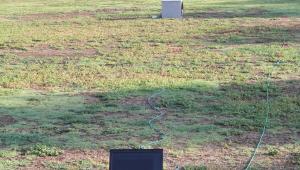CEA-2010: A Good Baseline for Bass? Page 3
The quest for the correct numbers
Considering all this, I decided to start from scratch. Maybe by making my measurement procedure as perfect as I possibly could — even taking extra steps that technically shouldn’t have mattered — I would achieve something close to perfection in my CEA-2010 measurements. If my numbers matched either Hsu’s or Audioholics’, then I’d know who had it right.
Here are the steps I took:
- I used various level-setting and setup tips from a “cheat sheet” authored by Keele that Hsu provided me.
- I incorporated three tips from DellaSala: measuring at 2 meters to better incorporate the contributions from the woofer and the ports; double-checking the calibration by measuring the calibrator’s output at 1 kHz with the CEA-2010 software; and double-checking the calibration with a second calibrator.
- I bought the same Earthworks M30 measurement microphone both Hsu and Audioholics use; it replaced the LinearX M31 I had been using. By the way, this shouldn’t have mattered, because all measurement microphones are essentially flat below 1 kHz. The calibration curves Earthworks provides for its mics don’t even go below 1 kHz.
- I performed a completely fresh calibration procedure, necessitated by the switch to measuring at 2 meters. (I’d done this procedure before, but at 1 meter.) To do this, I packed up a 15-inch sealed-box subwoofer (the one I built for my 4-2-1 subwoofer shootout), a Topping TP30 amp, my Clio FW speaker measurement rig and a couple of battery packs, and drove to a nearby soccer field very early on Sunday morning (the only time of the week when traffic noise from Highway 101, about 1.6 miles away, wasn’t audible). This allowed me to measure the frequency response of the subwoofer at 2 meters with no obstructions that would affect the measurement. I then drove home and performed the exact same measurement in my backyard, in the exact spot where I intended to do the measurements. I divided the park measurement by the backyard measurement to get a “correction curve,” which I entered into the CEA-2010 software to compensate for the frequency response anomalies caused by reflections from nearby objects, such as my house.
- I stopped by Aurasound in Santa Ana to check my Reed SC-05 mic calibrator against their ultra-expensive B&K 4220 calibrator, as well as their B&K 4231 calibrator.
Fortunately, my backyard provides a testing environment that suits the CEA-2010 procedure. Being in Southern California, mornings are almost always in the specified temperature range of 17° to 27° C (62.6° to 80.6° F), and it’s almost always within the specified 30% to 80% relative humidity. Power from the backyard AC outlet typically measures 119 volts, within the CEA-2010 window of 118.8 to 121.2 volts. (Although because most subwoofers are powered by switching-type amplifiers that are unaffected by major voltage swings, and because CEA-2010 uses tone bursts instead of continuous tones, this shouldn’t matter.) And the background noise measures right at the CEA-2010 maximum of 50 dB SPL (provided no planes are passing over, no cars are driving by, no nearby gardeners are running leaf blowers and the neighbor’s bulldog isn’t barking at me).





























































